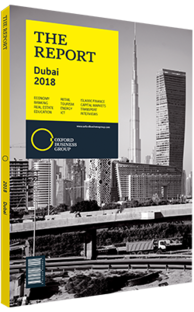Hussain Sajwani, Chairman, DAMAC Properties: Interview

Interview: Hussain Sajwani
To what extent has the recent economic slowdown impacted demand for real estate in Dubai, and what trends do you expect to see developing as a result?
HUSSAIN SAJWANI: Dubai’s real estate market remains robust. If you look at indicators such as rents, which are stable and not declining, the market looks healthy. In fact, demand is slightly outstripping supply. There are 10,000-12,000 units scheduled to come on-line annually over the coming years, whereas more like 20,000 are needed. Overall, while rents might fluctuate up or down 2-3% according to changing economic conditions, the market is much more mature now than in the past and prices, for the most part, have stabilised. The luxury segment, for example, saw prices decline between 2015 and 2016 but reach a healthy equilibrium since.
Looking forward, naturally the demand for mid-tier units will remain higher than in the luxury segment because the number of people who can afford the former is much higher. That said, there will still be considerable demand for the latter if developers continue to offer high-quality products in attractive locations. Dubai is accessible to several billion people between India, China, Pakistan, the Middle East and East Africa, and a large number of the very wealthy in those places, despite being a small percentage of the population, want second houses or holiday homes in Dubai. Even in a country of 10m people, maybe 10,000 can afford an apartment here, which is a lot. Given its stability, lack of taxes on residential property and income, and relatively high yields on rents at 6-7%, the market is a very attractive one for investors. In addition, there is no risk of the currency dropping given its peg to the dollar, and repatriation of money is very easy.
How have consumer preferences changed, and which projects are most attractive to investors?
SAJWANI: Dubai is a dynamic and constantly evolving market. The need for new and innovative products is constant. However, there have been some changes in consumer preferences over the past few years. People want smaller units compared to two years ago. Villas of 5000-6000 sq ft are no longer as popular as they once were, for example. The market has changed as well. In 2013-14, it was a seller’s market, so whatever you introduced was quickly absorbed. Starting in 2015-16, however, the market began to mature, and the developer had to start coming up with more creative small and medium-sized products to appeal to the customer base. This is where we are today. That said, there is a spectrum of demand; some people still want the Dh25m ($6.8m) villa, just not as many.
How confident are you that a crisis similar to that of 2008-09 will not happen again?
SAJWANI: We have great confidence in Dubai’s vision, strength and competitiveness as a global investment destination, in the real estate sector as well as other sectors. The best thing Dubai did in this regard was to create the Real Estate Regulatory Agency. Its rules and regulations are very advanced, very strict and really very fair to all parties involved, looking at the interests of the city first and then the interests of buyers and sellers. As such, I don’t expect a repeat of 2008. In addition, today we have an escrow system, and developers can’t launch projects until the land is fully paid for. The challenge we faced then was that much of the land was only 20% paid for and there was no escrow system, so property companies were taking money and putting it elsewhere before delivering. That cannot happen today.
How can developers be incentivised to invest in projects focusing on the middle-income segment?
SAJWANI: Dubai’s real estate market is ruled by supply and demand. I don’t think the government is interested in providing subsidies for the sector and I agree with them. If developers see demand and opportunity for profit, they will service the needs of the middle-income segment, which, in fact, they are currently doing.
You have reached the limit of premium articles you can view for free.
Choose from the options below to purchase print or digital editions of our Reports. You can also purchase a website subscription giving you unlimited access to all of our Reports online for 12 months.
If you have already purchased this Report or have a website subscription, please login to continue.

